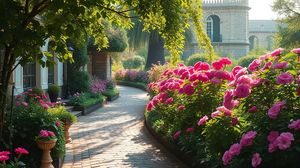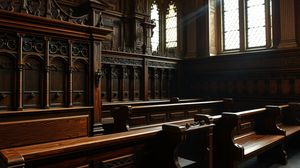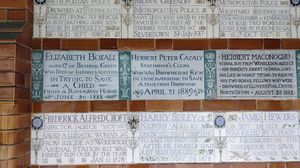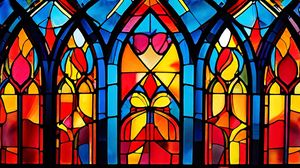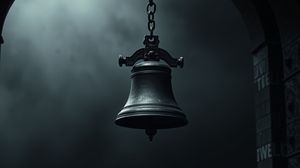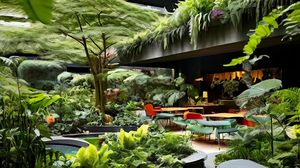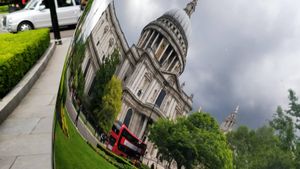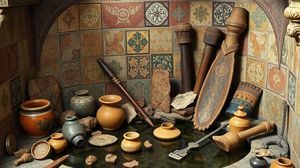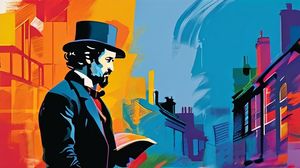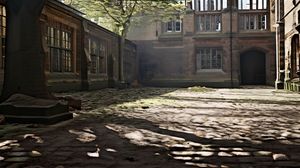
Charterhouse Square, located in the historic area of Clerkenwell, London, is a captivating blend of history and modernity. The square is part of a complex that has played a significant role in London's history, dating back to the 14th century when it was a Carthusian monastery.
One of the most interesting facets of Charterhouse Square is its transformation over the centuries. It began as a burial ground during the Black Death, then evolved into a Tudor mansion, an almshouse, and eventually became part of one of the oldest boys' schools in the country, Charterhouse School, before it relocated to Surrey.
A unique aspect of Charterhouse Square is its subterranean secrets. Below ground, there are hidden plague pits from the time of the Black Death, which lay undisturbed for centuries, becoming an integral part of London's urban archaeology.
The square is also known for its lush gardens which offer a peaceful retreat from the bustling city. The contrasting serenity of these gardens, juxtaposed with the vibrant life of the surrounding area, adds to its charm and character.
An intriguing architectural highlight is the Charterhouse building itself, which showcases a mix of Gothic, Tudor, and modern architectural styles, offering a tangible journey through time for architecture enthusiasts.
Visitors can explore the Charterhouse Museum, where they will find fascinating exhibits detailing the site's history, including stories of the monks who once resided there and the notable figures associated with its legacy.
Today, Charterhouse Square serves not only as a historical site but as a lively community hub, hosting various events and activities that reflect the cultural richness of London.

Making the Most of Your Visit:
First things first, when you get to Charterhouse Square, take a few moments to absorb the ambience of the gardens. It's a refreshingly peaceful spot amidst the urban hustle and makes for a delightful spot to just sit and soak it all in, especially on a sunny day.
Don't miss a visit to the Charterhouse Museum. It's small but packed with fascinating history. From the tales of Carthusian monks to the butlers of the Tudor court and the area's role in the Great Plague, the exhibits are brilliantly curated and give a comprehensive look into the site's storied past.
If you're fond of architecture, take your time to admire the various styles embodied in the Charterhouse building. Look out for the beautiful Tudor brickwork and elegant Gothic details. For the best view, walk around the square to see it from different angles.
A quirky piece of advice: keep your eyes peeled for the memorial benches scattered around the square. They often have interesting inscriptions that offer a glimpse into the lives of past Londoners who cherished this spot as much as today's visitors do.
Finally, if you're visiting in the summer months, see if there are any community events happening in the square. It's a fantastic way to experience the local culture and the vibrant life that Charterhouse Square continues to nurture.

Visiting Times & Costs:
Charterhouse Square, located in Clerkenwell, London, is accessible to the public and offers a mix of freely accessible areas and ticketed parts.
The square itself and the gardens are open to the public daily, allowing visitors to enjoy the serene environment without an entrance fee. These areas are generally accessible during daylight hours.
The Charterhouse Museum, which provides detailed insights into the site's history, has specific opening times: typically, it is open from Tuesday to Saturday, from 11:00 AM to 4:45 PM. However, it is advisable to check for any changes due to special events or holidays.
Entrance to the Charterhouse Museum may require a ticket. It is recommended to check the current pricing structure, as fees may vary between general exhibits and special exhibitions or guided tours.
As for accessibility, Charterhouse Square and its gardens are fairly accessible, with pathways that accommodate wheelchairs and strollers. The Charterhouse Museum is committed to being accessible to all visitors, with ramps and facilities available for those who require them. However, it is a good idea to inquire in advance about any specific accessibility needs to ensure a smooth visit.

Address & Map:

Nearby:
